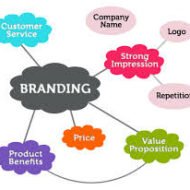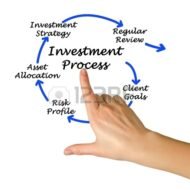Posted by Managementguru in Project Management
on Mar 6th, 2014 | 0 comments

A project can be made into a roaring success provided you have made your in-depth analysis and research to understand the nuances of the industry. Running a restaurant though looks cheesy from outside needs meticulous planning. Before plunging into the market it is better to have the data ready with you. How prepared you are to run the business is not the question; how well prepared are you to face the hurdles and challenges that come your way is all that matters. Only if you withstand the rough weather may you proceed to grow and then expand. Industry Insights Restaurant industry is one such area where many people try to set their foot daydreaming of immediate success. Unfortunately the scenario doesn’t warrant instant success. Any business that has a slow and steady growth makes it to the top. Have you ever thought about the wherewithal needed to run the show! The industry looks very appealing and promising from outside but reality matters. The industry’s main focus is on supply chain management where your primary and ultimate focus revolves round your customers, who are your main focal point. Info Courtesy: AycockMarketing Value Added Services Customer satisfaction should be your vision, mission, objective and goal. Of course you want to make profit. For what else in the world have you entered this business. But think about it, if you are not able to attract crowds, the effort is wasted. The qualityThe varietyThe appealThe presentationThe treatmentThe ambienceThe refreshment, that is being offered to the customers should make them feel special and worth the value of money they are shelling out to have an evening out with their family or friends. Rising costs make people think twice before they decide on their choice of restaurant. Be sure about the class of people whom you want to cater the needs. Go for the plan accordingly and design your restaurant. Is Your Design Appealing? The design includes a sober atmosphere where the visitors can relax, mild lighting that is soothing to the eyes, mellifluous music that creates a magical effect and the choice of drapes and furnishings that add grandeur. The core concept of food industry is “customer satisfaction“. A company’s greatest strength is the quality of its professional management. You have to manage your human resource personnel, the waiters, waitresses, the chefs, the managers, billing clerks in such a way that their one and only motive is to give quick service and great service the first time and every time. Managing Your Financials Managing your financials is an absolute necessity. The initial investment has to be taken care of since you do not know the period it takes to establish yourself in the industry. How, big chain of restaurants is run successfully all over the world? First four or five years are particularly important to prove your credibility both to yourself and others. They do their complete market research wherein the customers’ preferences are jotted down and taken into consideration. High performing and high potential managers are put into place to run the show without a hitch. Well trained waiters are a big plus. Big companies diversify to invest their profits in ever prosperous areas like food industry, where people are constantly looking for new arrivals and the “brand image” that the big companies establish cannot be matched by small time players. Great service is the key factor that makes these big time players unique. Locational Advantage Locational advantage is the most important criterion for a restaurant industry. Sufficient space must be provided for parking and the access to the location be made a pleasurable experience. Don’t go for guidance from your local competitors or friends,...

Posted by Managementguru in Business Management, Marketing, Principles of Management
on Mar 4th, 2014 | 0 comments

Trends in Consumer Marketing FMCG’s: Consumer marketing is defined as creating and selling products, goods and services to individual buyers, as opposed to trying to appeal to businesses. You would have often heard about this – Fast moving consumer goods. These are nothing but products that are destined for use by ultimate customers or households that cannot be done with, as their usage is on a day to day basis. It might make some sense if I cite some examples – toothpaste, soaps, shaving creams, talcs, body lotions; these are meant for personal consumption and the demand for such products is direct and needs less of relationship marketing. Brand Focus: The number of customers in the consumer market is relatively large and the product purchase is influenced by even emotional factors. The focus is on the brand name and some people ardently follow a particular brand for ages, and this might be attributed to the effect that has been created by mass media advertising, or it might be due to the fact that they might identify themselves in some or the other with the product. It becomes a personal companion over a period of time. Impulse Buying: The decision making process is informal and often simple. Sometimes, it is influenced by the budget equations and feasibility. Impulse buying is also common in consumer market. At times, the consumers go adventurous and like to try their hands on new products. Branding is an important feature that retains the customer base for business firms and that’s why market analysts are attaching so much of significance to advertisements and sales promotions, to make their product a household name. Distribution Network: The firms must have a pucca distribution network linking different parts of the territories, where they want to expand their market. Say, for instance, a soft drink can be made popular by branding, but if there is no sufficient supply in the market, how do you expect customers to support your product? Equally important is providing the customers with a product size that best suits their budget. Consumer Marketing Infographic: Researchomatic.com Market Segmentation: Market segmentation recognizes the existence of distinct market groups, each with a distinct set of needs. Through segmentation, the firm directs its product and promotional efforts towards those markets that will benefit most from or will get the greatest enjoyment from its merchandise. Over the years, segmentation has become a popular strategic technique as the market is ever flushed with competitors. Influence of Price: A number of sellers are seen in this kind of consumer market and it is only the market that decides the price and not the participants. The marketers have nothing to lose if they sell at the market price, but if they plan to sell at slightly higher price levels than that of the market, it will prove detrimental to their objective. https://www.businessmodelscholar.com/wp-content/uploads/2020/06/3.pdf They are only price takers and not price makers. But they have the leverage to freely enter and exit the market. If the consumers foresee a fall in the general price levels of a product, they wait for some more time to take full advantage of the situation and decide to postpone the purchase. If the market shows an increasing price trend, it is the other way round, either they buy in bulk or go for substitutes.Say, if the price levels of coffee is on the rise, people opt for tea. Demand for consumer goods is price elastic. Consumers don’t care for much technical specifications; they only care for the quality backed up by a strong brand name. Post by Free MBA...

Posted by Managementguru in Financial Management, Principles of Management
on Feb 28th, 2014 | 0 comments

What forms the Basis for your Investment Decisions? Profit seeking is the ultimate aim of corporate management and the finance manager acts as the anchor point of the management structure. He has to provide specific inputs into the decision-making process, with respect to profitability. Corporate Investment Decisions Cost control What are the Cost Centres? It is the finance manager’s responsibility to have an eagle’s eye on rising costs by continuously monitoring the cost centers of his organization. Production department where there is always a need for additional resources or inflow of funds, should be his first target of contol. Costs are incurred by each and every department of an organization, namely, the production, marketing, personnel and of course finance and accounting. It is a difficult task to control the rising costs. That is the reason why, big corporate companies go for annual budget formulation at the start of the year and reformulates the finance plan by comparing actual with the projected figures. This kind of evaluation helps the firm to fix responsibilities for various centers of operation. Resource Allocation A finance manager is the first person to recognize rising costs for supplies or production, and he can make immediate recommendations to the management to bring back costs under control. While cost control talks about allocating resources to different responsibility centers in the desired proportion, cost reduction focuses on conserving the resources. Cost reduction can be achieved through modifying product and process designs, cutting down throughput time, doubling labor productivity, mass customization, standardistion etc., Pricing Price Fixation It is always a joint venture between marketing and finance departments when it comes to price fixation of products, product lines and services. Pricing decisions are important in that, they affect market demand and the company’s competitive stand in the market. Pricing strategies have to be evolved in the wake of existing competitor strategies and market preference. The demand forecast is the prerequisite factor of the production process and in-depth market analysis and understanding is inevitable on the part of the executives. Future Levels of Profit The finance manager is also responsible for charting out the future levels of profit, based on the relevant data available. He has to consider the current costs, likely increase in costs and likely changes in the ability of the firm to sell its products at the established selling prices. So, it becomes clear that, such market evaluation cannot be periodical, as the market is highly dynamic and has to be done in a day-to-day basis. Before a firm commences a project, its discounted future fund flow and expected profits must be ascertained which will serve as a basis for comparison. Risk versus Return: Investment decisions always are risky as the gestation period of invested funds is very long and not to return immediately. Further, the firm has to calculate the time period in which its initial investment can be recovered and the feasibility of the rate of return on its investment. Fund Management The finance manager is engaged in activities like, mobilization of funds, deployment of funds, and control over the use of funds and also he is to evaluate the risk return trade-off. Profit maximization is the fundamental objective of any organization and the finance manager plays a key role in restructuring the financial philosophy of a firm to take it to greater...






